Children of Morta is a game about family. Mechanically, it's a satisfying dungeon crawler where you grind through bad guys, level up your characters, and unlock better abilities so that you can face off against a series of increasingly difficult bosses. But really, at its heart, it's a compelling game about what it means to be a part of a family, and how being surrounded by loved ones can make you a better, stronger person.
The Bergson family, six of whom you're able to play as, is made up of warriors, mages, and inventors all tasked with holding back the Corruption--which has, at the game's opening, started to spread across their homeland. Their house sits atop a shrine, and to battle against the evil forces of the demonic Ou they need to travel through portals and conquer dungeons, in order to awaken three spirits that can guard against the Corruption.
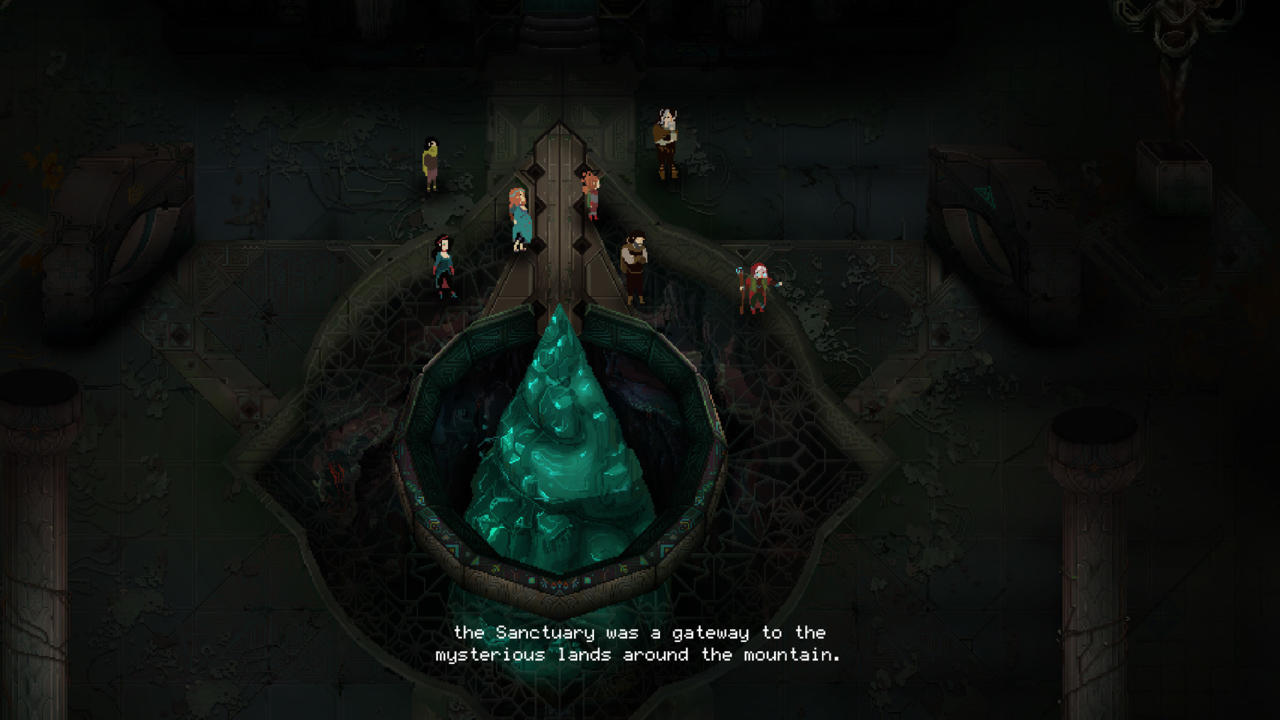
It's a cliched fantasy setup, but Children of Morta makes the most of its tropes by making sure that you're invested in the Bergsons and their plight. Between runs of the dungeons, you're treated to cutscenes and vignettes of the family interacting with one another, and you get to know the beats of their lives and what they get up to when they're not enduring dungeons. You start with two playable characters, family patriarch John and his eldest daughter Linda, but the other four are introduced within the game's opening half. Seeing them train and grow in cutscenes, and getting a sense of their place within the family, means that you're already attached to the characters before you get your hands on them.
Gameplay in Children of Morta involves battling your way through hordes of enemies to reach each dungeon's boss, exploring thoroughly and nabbing as many temporary boosts as you can along the way. Each character has three main abilities they'll unlock as they level up: a standard attack that can be used continuously, a special attack with a cooldown, and a more defensive ability (although some of these can still do damage). The combat isn’t necessarily super deep, but it’s a lot of fun thanks to some extremely satisfying animation and the strategic possibilities that become available as you level up. Dungeons consist of multiple levels and are generated anew each time you enter, so finding the entrance to the next level will always require some exploration. Occasionally I’d find myself frustrated when the path to the exit ended up being very elaborate, but this also kept the game feeling fresh when some dungeons took a long time to clear.
There's an imbalance between the number of melee and ranged characters--four melee to two ranged--which is a shame, because playing the ranged characters changes the rhythm of the game significantly by encouraging a slower, more thoughtful playstyle, and only having two of them feels like a missed opportunity. I found that Linda (who uses a bow and arrow) was the character I most often managed to beat bosses with, since so many bosses are primed to punish you for getting too close, and I would have loved to have another option beyond her and Lucy, the family’s youngest daughter.
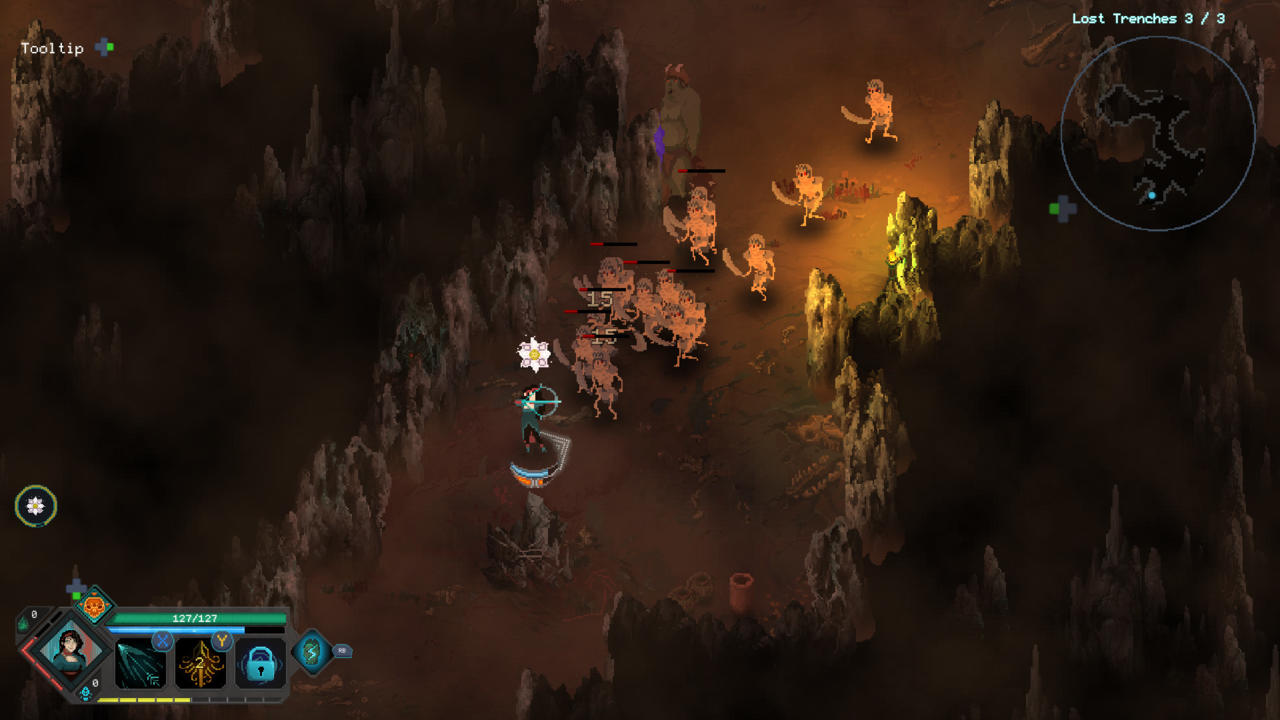
Each character plays differently, and you'll no doubt have your favorites. Lucy can shoot a continuous wave of fireballs while standing still, and can be upgraded to withstand three hits without damage; Kevin, the youngest son, can dramatically increase his speed and strength by building up "rage" with continuous knife attacks, but he needs to get very up-close to do so before using his power of invisibility to get out of danger. Some characters are less interesting; for the life of me I can't figure out how to make Joey, who swings a huge hammer, effective. But it's still fun trying out a character you haven't played for a few runs and getting into the groove with each of their distinct rhythms.
You need to switch characters regularly, too, as any member of the family who is used too many times in a row begins to suffer from corruption fatigue, which lowers their overall health until they're given time to recover. Each member of the family can also unlock new abilities that benefit every other family member as they level up (like higher rates of critical attack or even assists in certain situations), and later abilities in their skill trees can be very useful--I initially dismissed John for being too slow but found his shield and wide swing arc extremely useful later in the game, and was ultimately glad that the game encouraged me to use every character and discover their strengths (in five cases out of six, at least).
The plot's focus on the family, paired with the tremendous art and beautiful animation, makes it easy to love the Bergsons. Lucy is so full of energy that she'll jump in the middle of her run animation (which doesn't interrupt your pathfinding at all but adds personality to her sprite), while eldest son Mark's Naruto-style run is a perfect complement to his martial arts fighting style. Charming touches like this are everywhere, and they give the characters more personality. You feel those unique traits come through in combat, too; there are few things more satisfying than seeing Kevin shimmer with rage and rip through a huge mob of enemies.
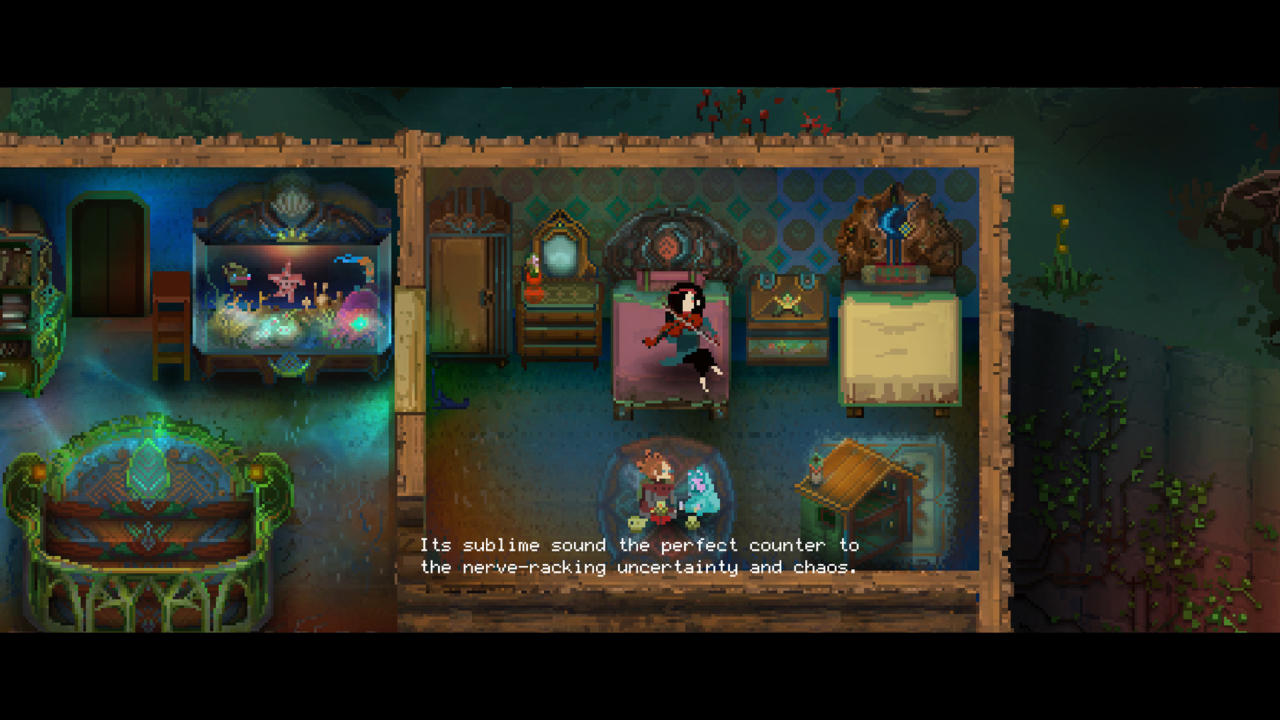
And as with any family gathering, Children of Morta will encourage and then test your patience. It's a grind-heavy game; it was very rare for me to beat a dungeon on my first shot, as most required that I level up and learn the boss' attack patterns, which requires storming through the dungeon to get to them a few times. You can get away with running right past most enemy mobs, but to stand a chance against the boss at the end, you want to be armed with powerful buffs, and growing stronger requires farming experience and gold to unlock new abilities and improve your stats.
However, it takes a long time for the grind to start wearing you down. The combat is meaty and intense, and the allure of growing stronger is so compelling that dealing with huge crowds and collecting all the gold they spill can hold your attention for hours. There's a sharp increase in difficulty right at the end, but I could always identify what had gone right--which fights I'd avoided, which charms I'd made use of, how I'd thought about my character's relative strengths and weaknesses to the boss--and adjust my strategies accordingly to continue to do well. The grind helped make me a better player, instead of simply acting as a level gate.
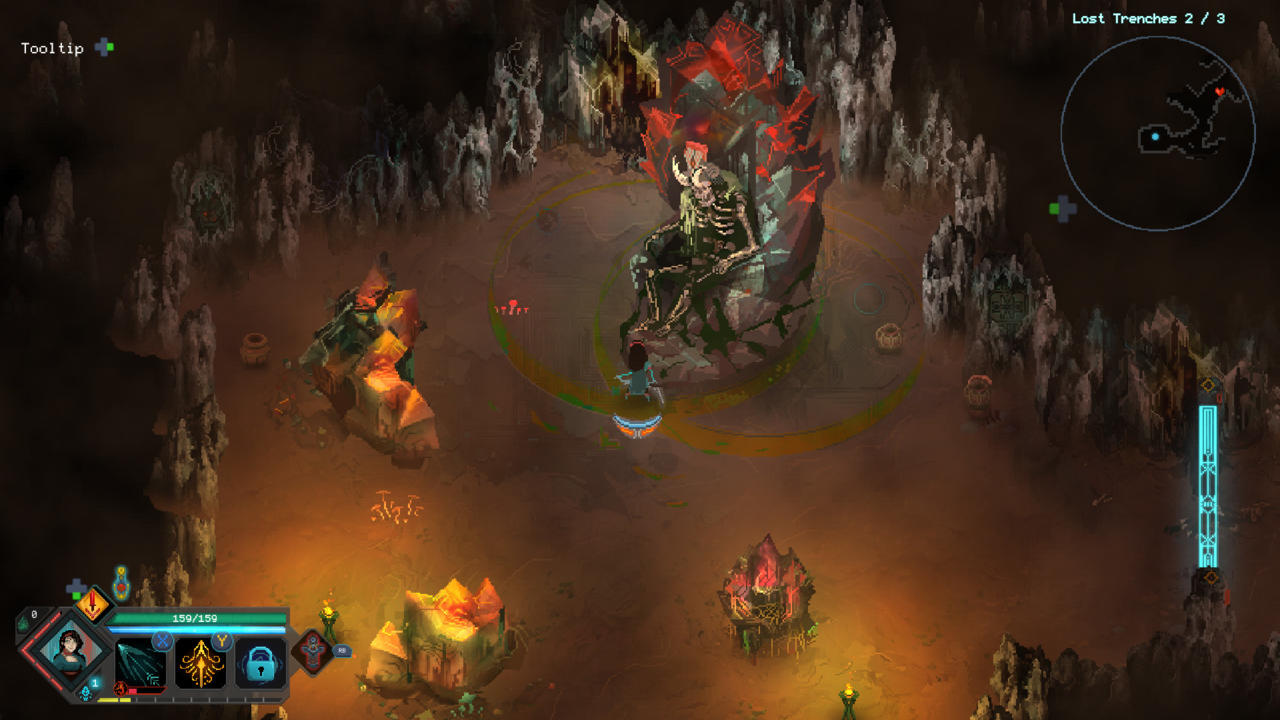
There are special buffs that are only active for that session, and you have a much better chance of beating the boss if you go in after thoroughly exploring the dungeon and powering up. There are many different kinds of buff you can unlock, some temporary, some permanent; I found that I did far better against bosses when I went in with a lot of them active. You can find the various items and objects that make you more powerful throughout each dungeon, or buy them from shopkeepers that pop up, and I found myself getting excited whenever I found a good combination. Going up against a boss that has beaten you several times, now armed with a combination that you think will give you an advantage, is a great feeling.
Your dungeon runs are also broken up by numerous subquests that can appear throughout each dungeon, which expand on the game's lore, introduce new NPCs, and result in significant upgrades or rewards. A few even have major narrative impact--there are a series of quests early on that end with the Bergsons adopting and raising an adorable puppy, for instance. But if one dungeon is really giving you grief, eventually it can feel like the game's ready for you to move on before you're ready yourself--you'll stop getting cutscenes and character vignettes after missions, and you'll find that you've run out of subquests to complete. But then, the feeling of eventually taking down a boss that was troubling you is extremely satisfying, especially knowing that you're going to get more lovely character moments as you try to beat the next one.
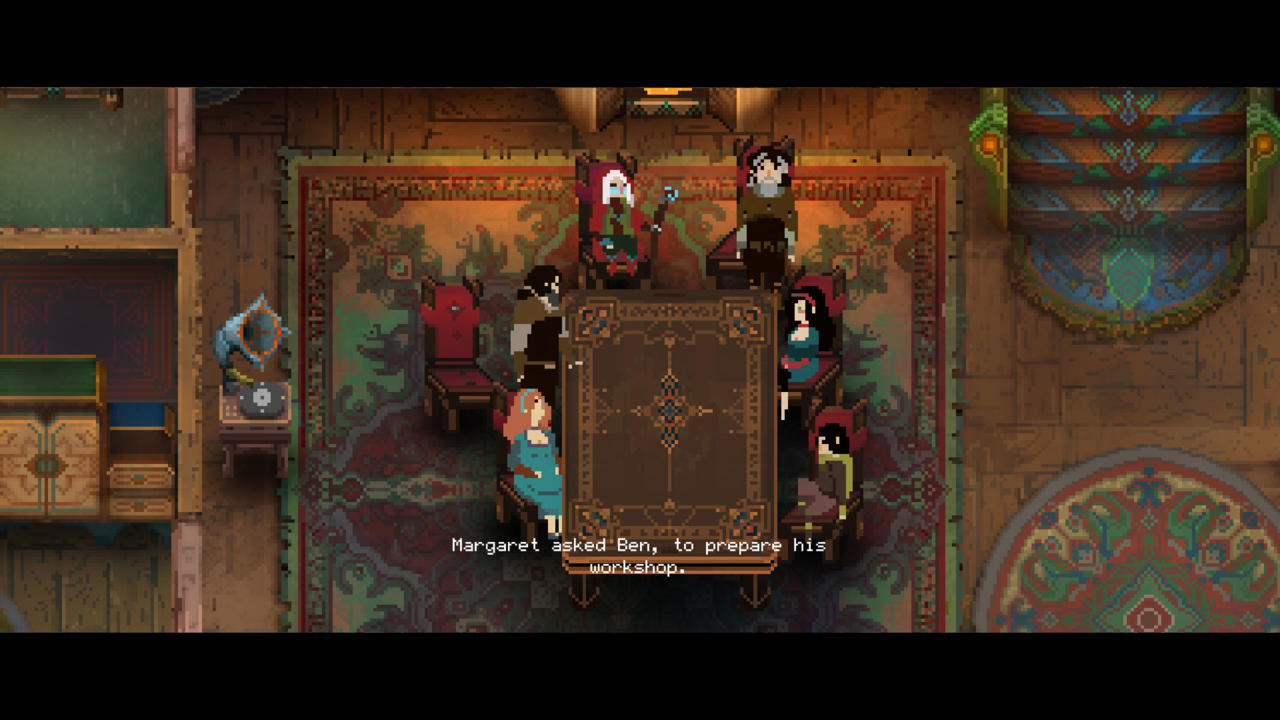
You also have the option of playing the whole game in co-op, and the game balance differs depending on whether you're alone or not. However, I found myself preferring to stick to solo play--it's annoying for a friend to talk over cutscenes and the difficulty scaling makes co-op more complicated.
Children of Morta's fantastic art style and enjoyable storytelling take what would have been an otherwise fun roguelike dungeon-crawler and elevate it a great deal. Taking down enemies and eventually triumphing over bosses is enjoyable, but what kept bringing me back was the connection I felt to the Bergsons, and my sincere desire to help them push back against the Corruption. After all, it's a lot easier dealing with dungeons full of monsters when you have a family to come home to.